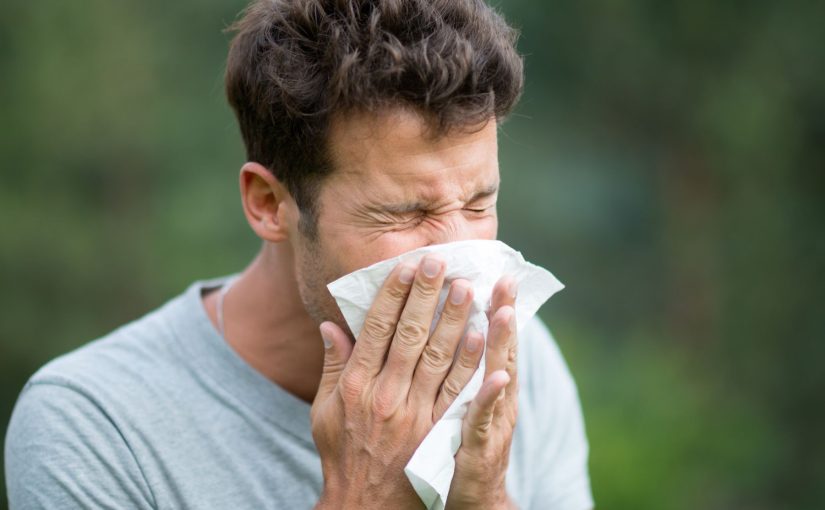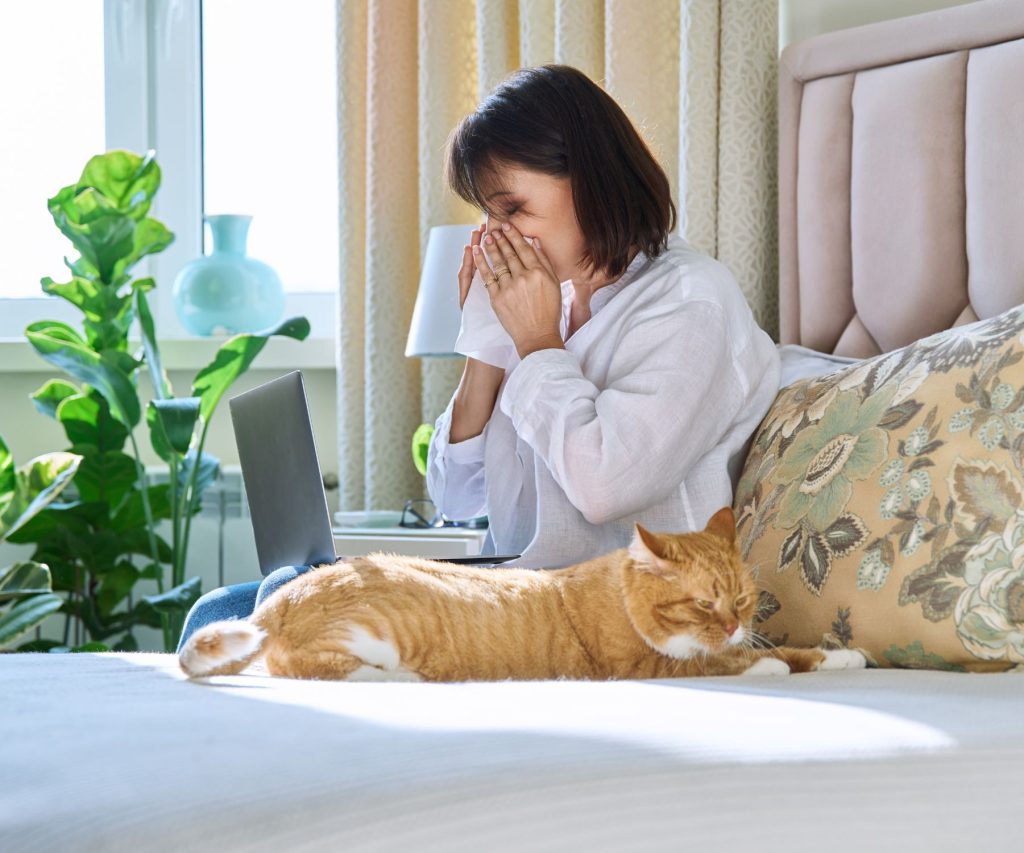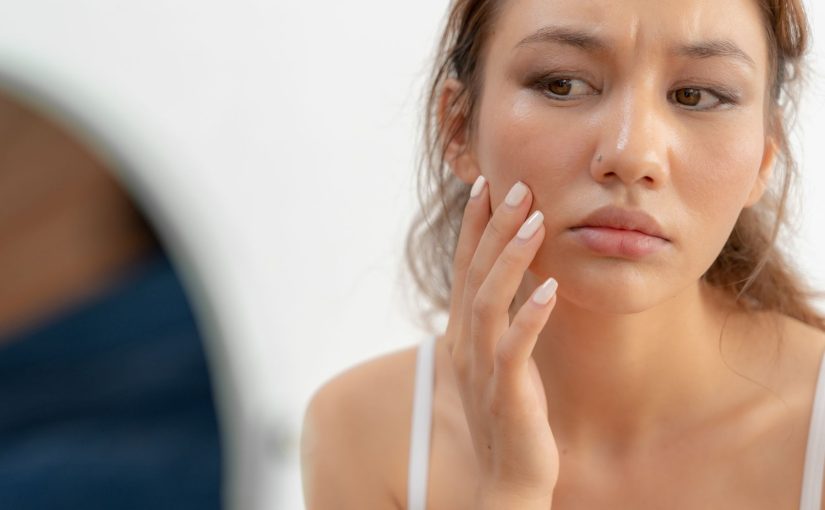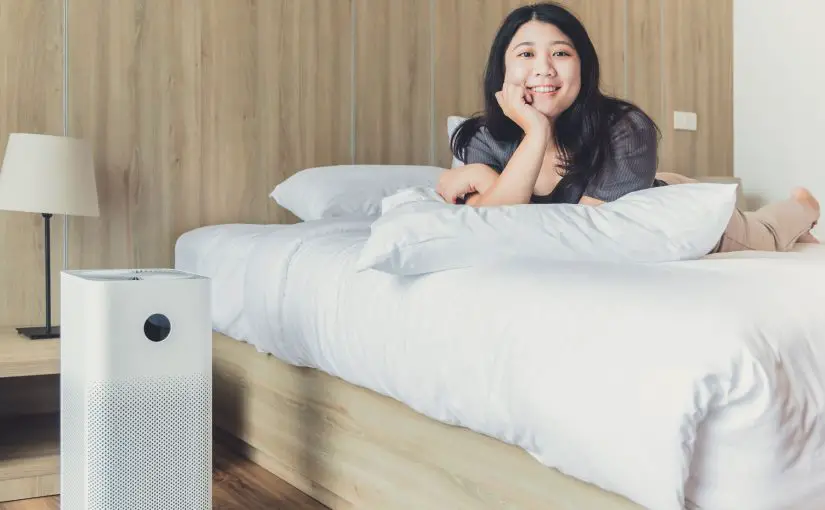Choosing the Best HEPA Filters for Smoke
Introduction
HEPA filters are an effective way to improve indoor air quality by capturing harmful particles and pollutants. HEPA, which stands for high-efficiency particulate air, is a type of mechanical air filter that forces air through a fine mesh and traps particles as small as 0.3 microns. This includes smoke, dust, pollen, pet dander, mold spores, and bacteria.
HEPA filters work by pulling air through a tightly woven mat of glass fibers or a similar synthetic material. As the air passes through, pollutant particles get stuck on the fibers. The mesh is so fine that it can capture over 99.97% of particles 0.3 microns or larger. This means HEPA filters excel at trapping the tiny particles in smoke and other irritants that can cause health issues.
Using HEPA filters can provide several benefits when dealing with smoke:
- Improve indoor air quality by reducing smoke particles, ash, and associated odors
- Lower the health risks from smoke inhalation including eye, nose and lung irritation
- Help prevent particles from settling on surfaces and fabrics throughout the home
- Eliminate persistent smoky smells from fabrics, carpets, walls and other household items
The aim of this article is to review some of the best HEPA filters for smoke available today, compare their features and performance, and provide tips on choosing the right one for your needs. We will examine the differences between standard and true HEPA filters, the importance of combining HEPA with activated carbon, key features to look for, and recommend top-rated models on the market. With the right HEPA filter, you can effectively remove smoke from the air and enjoy cleaner, healthier indoor air quality.
How to Reduce Smoke Exposure at Home
When wildfires or other sources are causing smoky outdoor air, the smoke can easily infiltrate into your home. While HEPA filters are extremely effective at trapping smoke particles, there are also some other steps you can take to reduce smoke exposure at home:
Use Air Purifiers with HEPA Filters
- Invest in an air purifier for your home that uses true HEPA filtration. This will maximize removal of fine smoke particles.
- Choose an air purifier with a high clean air delivery rate (CADR) specifically for smoke removal (200 cfm or higher recommended).
- Place the air purifier in rooms where you spend a lot of time with the doors closed, such as bedrooms. Run it continuously on the highest fan setting during smoke events.
Seal Windows, Doors and Vents
- Use weather stripping or draft blockers to seal any gaps or cracks around windows and external doors. This prevents smoke from seeping into the home.
- Make sure all vents and openings are closed (fireplace dampers, dryer vents, etc).
- Operate the air conditioner or central heating system with recirculated indoor air rather than drawing in outdoor air.
Avoid Additional Indoor Pollutants
- Avoid activities like smoking, burning candles or incense, frying foods, and vacuuming that can generate additional indoor pollutants.
- Consider avoiding ozone generators or ionic air purifiers, as they can produce harmful byproducts that irritate the lungs.
Create a Clean Room
- Set up a designated clean room in your home with a portable air purifier and enhanced seals around windows and doors. Spend most of your time in this space when smoke levels are high outdoors.
Using air purifiers effectively along with other methods can significantly reduce smoke particles indoors and create cleaner air shelters even when outdoor air quality is poor.
 Differences Between Standard and True HEPA Filters
Differences Between Standard and True HEPA Filters
There are some key differences between standard HEPA filters and true HEPA filters that impact their effectiveness at removing smoke particles from the air:
Particle Removal Efficiency
- Standard HEPA filters are designed to capture at least 99.97% of particles 0.3 microns in size.
- True HEPA filters capture 99.99% or more of particles 0.1 microns and larger.
Materials and Construction
- Standard HEPA filters often use loosely packed glass fibers.
- True HEPA filters use densely packed fibers and additional components to optimize air flow and maximize particle capture.
Smoke Particle Size
- The majority of smoke particles generated by fires fall within the 0.01 to 1 micron size range.
- This means true HEPA filters will capture more smoke particles compared to standard HEPA filters.
In summary, true HEPA filters are superior at trapping the fine particles present in smoke thanks to their enhanced design and materials. While standard HEPA filters still perform well, true HEPA is recommended for optimal smoke removal.
Using Activated Carbon/Charcoal Filters for Smoke Odors and VOCs
HEPA filtration excels at removing smoke particles and ash from the air, but cannot eliminate associated odors or gaseous pollutants known as volatile organic compounds (VOCs).
That’s where using activated carbon or charcoal filters comes in. These work through a process called adsorption:
- Activated carbon/charcoal filters contain a highly porous media with an extremely large surface area.
- As air passes through, smoke odors, VOCs, and other gaseous pollutants are trapped on the surface of the carbon through chemical attractions.
- This effectively removes them from the air without generating any byproducts.
The large surface area packed into a small carbon filter allows it to adsorb large volumes of gaseous contaminants.
Some key benefits of activated carbon/charcoal filtration for smoke odors and VOCs:
- Eliminate smoky or burnt smells from the air
- Remove irritating VOCs like formaldehyde that can cause eye, nose and throat irritation
- Prevent residual odors from being absorbed into walls, carpets, furniture and other household items
- Carbon filters don’t generate any byproducts or harmful side effects
Look for an air purifier that combines both true HEPA and activated carbon or charcoal filtration for comprehensive smoke removal. The pairing maximizes removal of all particle sizes as well as eliminates unpleasant odors and VOC exposure.
Top Rated HEPA Air Purifiers for Smoke
There are many air purifier models on the market equipped with true HEPA and activated carbon filtration ideal for smoke removal. Here are some top choices:

 Blueair Blue Pure 211Max
Blueair Blue Pure 211Max
- True HEPA filter captures 99.97% of 0.3 micron particles
- Activated carbon filter for gaseous odors and VOCs
- 350 CADR rating for smoke (recommended for 700 sq ft)
- Whisper-silent operation at lowest speed
- WiFi connectivity to control from phone
- Energy Star certified for efficiency
Pros
- Very high smoke CADR rating
- Can report real-time particle levels via app
- Low noise levels
- Attractive Swedish design
Cons
- On the more expensive side
- Some users report off-gassing initially
Average Amazon Rating: 4.6 out of 5 stars

 LEVOIT 400
LEVOIT 400
- True HEPA filter removes 99.97% of 0.3 micron particles
- Activated carbon filter eliminates smoke odors and VOCs
- 180 CADR rating for smoke (recommended for 219 sq ft)
- Whisper-quiet operation as low as 24 dB
- Night light mode in darkness
- Small and compact design
Pros:
- Very affordable price point
- Ultra-quiet operation
- Purifies well for small rooms
- Night light provides soft illumination
Cons:
- Lower smoke CADR rating than some models
- Not app connected
- No smart sensors
Average Amazon Rating: 4.7 out of 5 stars

 Alen BreatheSmart FLEX
Alen BreatheSmart FLEX
- True HEPA filter captures 99.99% of particles
- Activated carbon layer removes VOCs and smoke odors
- 4 fan speeds with automatic mode
- Covers up to 1100 sq ft
- LCD display shows air quality readings
- Lifetime warranty on filters
Pros
- Excellent coverage for large rooms
- Very effective 0.1 micron filtration
- Long-lasting filters under warranty
- Great for smoke allergies
Cons
- Bulkier and heavier than other models
- Higher operating noise on max speed
Average Amazon Rating: 4.6 out of 5 stars
Medify MA-112
- H13 True HEPA filter removes 99.99% of particles down to 0.1 microns
- 30 lbs activated carbon filter for VOCs and odors
- Covers 764 sq ft at 2 air changes/hour
- Super high smoke CADR of 400 cfm
- Whisper-quiet operation as low as 30 dB
- 3-year warranty included
Pros
- Extremely high smoke CADR rating
- Massive carbon filter for odors
- Very quiet performance
- Long warranty coverage
Cons
- Higher price point
- App connectivity can be glitchy
- Large and heavy unit
Average Amazon Rating: 4.6 out of 5 stars
Buying Considerations for HEPA Air Purifiers
When choosing an air purifier with true HEPA and activated carbon filtration for smoke removal, keep these key criteria in mind:
- Room Size: Pick an air purifier with the recommended CADR and coverage capacity for the room size you need to purify.
- Filters: Select a model with both true HEPA and activated carbon or charcoal filters for full smoke removal.
- CADR for Smoke: Look for a higher CADR specifically for smoke particles (200+ cfm recommended). This ensures adequate filtration capacity.
- Noise Level: Consider lower decibel models if sensitive to noise. Under 50 dB is ideal for bedrooms.
- Smart Features: WiFi, air quality sensors, and apps allow you to monitor pollution levels and control the air purifier remotely.
- Cost: Balance performance with budget. Replacement filters, energy use, and warranty should also be considered long-term.
- Reviews: Customer reviews can provide helpful insight into real-world performance and durability.
Choosing the Right HEPA Filter for Your Needs
Here are some final tips for choosing the right true HEPA air purifier with activated carbon to meet your specific smoke filtration needs:
- For large rooms over 700 sq ft, look for models with a higher smoke CADR (300+) and larger coverage capacities. The Blueair 211+ is a great choice.
- For smaller rooms under 400 sq ft, more compact and affordable models like the LEVOIT Core 300 can provide sufficient filtration without overkill.
- If you want whisper quiet operation, focus on air purifiers that produce under 50 dB on the lowest setting like the Blueair 211+ or Medify MA-112.
- Buy an air purifier with a carbon filter over 10 lbs like the Medify MA-112 to maximize smoke odor removal throughout your home.
- To remove heavy smoke quickly, choose a machine with a smoke CADR over 300 cfm and run it on the highest setting during smoke events.
- If you have smoke allergies, look for models with true medical grade H13 or H14 HEPA like the Medify MA-112 that remove over 99.99% of particles.
- Check that the unit has an AHAM Verifide seal to ensure the CADR ratings have been independently certified.
Investing in a high-quality HEPA air purifier designed for smoke will provide cleaner, healthier indoor air during wildfires or other events. Breathe easier knowing the top-rated models here will efficiently remove those harmful particles and odors from your home’s air.
Frequently Asked Questions
1. What is the difference between HEPA and activated carbon filters?
- HEPA filters use a fine mesh to capture airborne particles like smoke through mechanical filtration. Activated carbon adsorbs gaseous pollutants like smoke odors and VOCs through chemical attraction to its porous surface. Together, they remove all aspects of smoke.
2. How often do I need to replace the filters?
- Most HEPA filters last 6-12 months with average use. Carbon filters last around 3-6 months. Check the manufacturer’s recommendations and replace filters once performance declines.
3. Can HEPA filters remove viruses or COVID-19 from the air?
- Yes, HEPA filters are effective at removing virus particles including SARS-CoV-2 since they get trapped in the filter mesh along with other particles.
4. Why is a higher CADR for smoke important?
- A higher CADR rating specifically for smoke particles ensures the air purifier can filter a larger volume of smoke-laden air. This results in faster removal and cleaner indoor air.
5. Should I leave the air purifier on all the time?
- You can run the air purifier continuously on a lower setting. But it’s recommended to run it on max speed when air pollution is high, then revert to auto mode. Shut it off when not needed to conserve filters.
6. Can HEPA filters reduce secondhand smoke?
Yes, the small particles in secondhand smoke are easily captured by true HEPA filters. Using an air purifier can significantly reduce exposure to the harmful toxins and chemicals in secondhand smoke indoors.
7. Why does smoke smell linger even after air purification?
Smoke odors and VOCs can absorb into walls, carpets, floors and furniture which then slowly re-emit them later. Activated carbon filtration helps reduce this, but you may need to clean surfaces to fully eliminate absorbed smoke smells.
8. Are HEPA air purifiers safe?
Yes, HEPA air purifiers are completely safe when used as directed. The filters simply trap particles without generating ozone or other byproducts. Just maintain the filter to prevent any potential mold growth from moisture buildup.
9. How do I measure the effectiveness of the air purifier?
You can use an air quality monitor that detects PM2.5 to test particle levels before and after turning on the air purifier. Significantly lower readings indicate it is working to reduce indoor pollution.
10. Can air purifiers reduce exposure to wildfire smoke?
Yes, by filtering out the fine particulate matter that makes up wildfire smoke, high-quality HEPA purifiers can significantly improve your indoor air quality when outdoor air is hazardous. Just make sure windows are closed.
Here are the additional sections added to the article:
Comparing HEPA Filter Technologies
There are several different classifications of HEPA filters available that use various materials and designs to achieve high-efficiency particulate air filtration:
HEPA
- Removes 99.97% of particles ≥0.3 microns
- Made of randomly arranged fiberglass fibers
- Low initial cost but shorter 1-3 year lifespan
HEPA Type/Type A
- 99.99% efficient at 0.3 microns
- Pleated filter medium for lower air resistance
- Polyester fibers instead of glass
- Lasts up to 5 years
HyperHEPA
- Removes 99.99% of particles ≥0.1 microns
- Nano-fiber layered construction
- Lower initial resistance for better airflow
- 5-10 year lifespan
UltraHEPA
- H13 or H14 military grade filtration
- 99.99% efficient at MPPS of 0.1 to 0.2 microns
- Extremely dense microglass media
- Used in hospitals, clean rooms, labs
| Filter Class | Efficiency | Filter Life | Initial Resistance | Cost |
|---|---|---|---|---|
| HEPA | 99.97% @ 0.3 microns | 1-3 years | Medium | $ |
| HEPA Type | 99.99% @ 0.3 microns | 3-5 years | Low | $$ |
| HyperHEPA | 99.99% @ 0.1 microns | 5-10 years | Very Low | $$$ |
| UltraHEPA | 99.99% @ 0.1-0.2 microns | 10+ years | Medium | $$$$ |
While standard HEPA filters perform well for most residential needs, upgraded versions provide longer lasting filtration, capture more ultrafine particles, and maintain airflow better over time.
Understanding HEPA Filter Ratings
Beyond the HEPA classification, filters are also rated on additional performance criteria using testing standards from organizations like AHAM, ASHRAE and IEST:
- MERV – Minimum Efficiency Reporting Value (ASHRAE 52.2) – measures filter effectiveness from 1 to 16+. HEPA filters are MERV 17 to 20.
- MPR – Microparticle Performance Rating (AHAM AC-1) – measures ability to capture 0.1 to 1 micron particles like some bacteria and smoke particles. HEPA filters typically have 2000+ MPR.
- Dust Spot Efficiency – measures ability to capture 3-10 micron particles like mold, dust and pollen spores. HEPA filters achieve 85%+.
- Initial Resistance – measures air pressure drop across filter in clean condition. Lower is better for airflow. under 1.0 inches w.g. is ideal.
- CADR Ratings – Clean Air Delivery Rate (AHAM AC-1) measures volume of filtered air delivered for dust, pollen and smoke. Higher numbers are better.
These ratings provide assurance of filtration performance for smoke, allergens, and other pollutants. High-quality HEPA filters will excel across all criteria.
HEPA Filter FAQs
How long do HEPA filters last?
Most HEPA filters are effective for 6-12 months under normal use before needing replacement. Heavy smoke, dust or pet dander can clog filters more quickly.
What are HEPA filters made of?
HEPA filters contain a dense web of tiny glass fibers or an alternative synthetic material engineered to capture extremely small particles.
Can you clean and reuse a HEPA filter?
Unfortunately HEPA filters cannot be effectively cleaned, washed or renewed once they become clogged. The tight mesh becomes damaged, reducing filtration performance.
What allergens do HEPA filters remove?
In addition to smoke, HEPA filters capture pollen, mold spores, pet dander, dust mites, bacteria and other microscopic allergens and irritants.
Do HEPA filters require special disposal?
Once fully loaded with particles, used HEPA filters can be disposed of with normal household trash. Bag the filter to contain any loose particles or odors.
Additional Smoke Removal Tips
Ionizers and UV Light Technologies
- Negative ion generators help clean smoke odors and particles electrostatically.
- UV lamps kill bacteria and mold to prevent growth on filters and surfaces.
- Photocatalytic oxidation uses UV light and titanium dioxide to break down VOCs.
Cleaning Smoke Residue and Odors
- Ozone machines can help deodorize after smoke damage. Run when unoccupied due to toxicity.
- Deep clean all surfaces, rinse filters in washable HVAC systems.
- Keep air circulating and exchange air filters frequently.
- Seal affected porous materials like insulation and fabrics.
Smoke Damage Assessment and Repair
- Look for soot stains or odors to identify affected areas.
- Use mold test kits to check for spore growth on damp surfaces.
- Call certified professionals for duct cleaning, structure drying or containment.
- Completely replace damaged porous materials like carpets, drywall and furniture.
Conclusion
Smoke particles and odors can quickly degrade indoor air quality and health. Equipping your home with a true HEPA air purifier with activated carbon filtration allows you to proactively remove these contaminants for cleaner, healthier air.
If outdoor smoke is a concern, invest in a model designed specifically for high smoke CADR and carbon odor removal. Position the unit where you need it most, keep the filters maintained, and run it whenever air pollution rises.
Control your indoor air quality rather than allowing smoke events to control it for you. Breathe easier by adding one of the outstanding HEPA air purifiers compared here to your home.


 Differences Between Standard and True HEPA Filters
Differences Between Standard and True HEPA Filters



 Understanding Home Humidity Levels
Understanding Home Humidity Levels
 Where to Place an Air Purifier
Where to Place an Air Purifier








 Natural Remedies for Cat Allergies
Natural Remedies for Cat Allergies 11. Use HEPA Furnace Filters
11. Use HEPA Furnace Filters


 Medications for Allergy Relief
Medications for Allergy Relief
 Tips To Prevent Humidity-Related Sneezing
Tips To Prevent Humidity-Related Sneezing
 Over-the-Counter Solutions
Over-the-Counter Solutions Resources and Further Reading
Resources and Further Reading
 Choosing the Best Air Filter for a Bedroom
Choosing the Best Air Filter for a Bedroom Best Air Filters for Bedrooms
Best Air Filters for Bedrooms